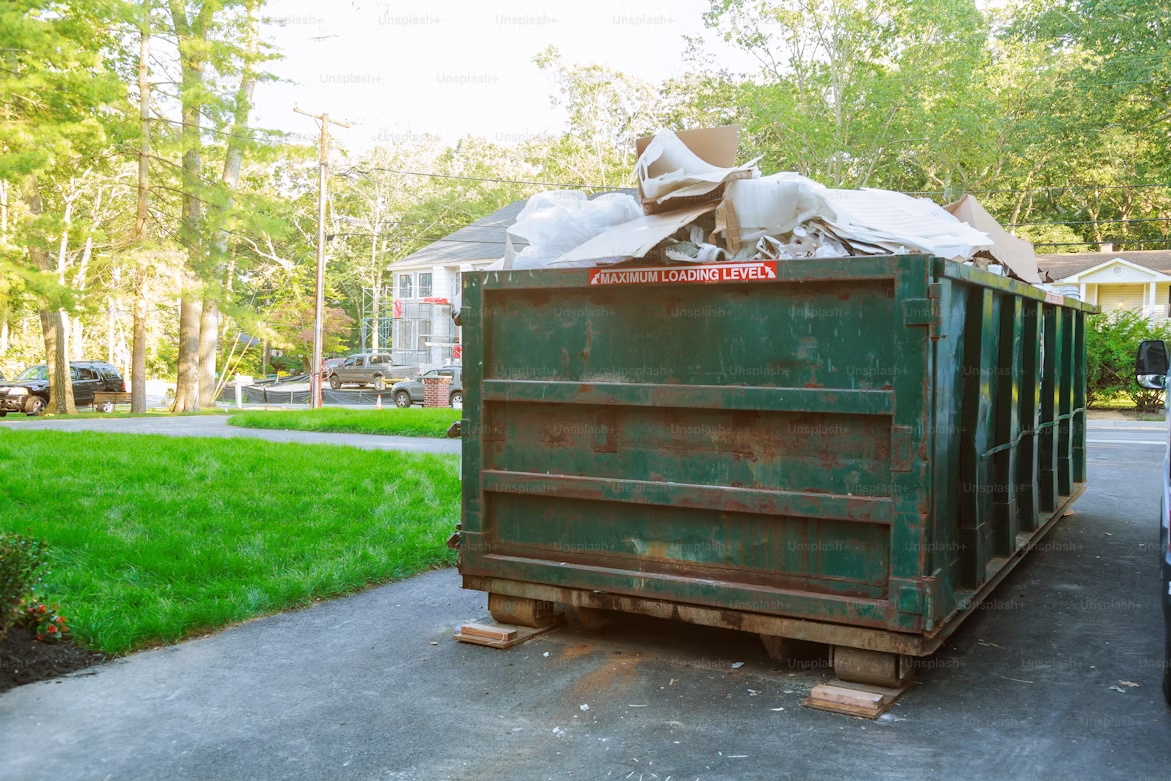If you’re searching for waste dumpster rental because a project just got real (and the debris is piling up), this guide is for you. Our job is to make your week easier: match the right bin to your materials, set an honest price up front, and schedule delivery and pickup so you finish on time, with no last-minute surprises.
Junk Rescue AZ provides dependable dumpster rental services for residential and commercial cleanups across Arizona. Whether you’re decluttering your home, renovating a space, or managing a construction site, they make disposal simple, transparent, and stress-free.
What actually makes up the price
Dumpster pricing isn’t random. It’s built from a few predictable parts you can control:
- Container size (cubic yards). Bigger bins cost more up front but can be cheaper per cubic yard if you’ll truly fill them.
- Included weight (tonnage allowance). Landfills charge by weight. If you exceed the allowance, overage fees apply based on the scale ticket.
- Rental window. Most short jobs include 5–7 days; you can add days or swap the bin mid-project.
- Debris type. Household junk is light; roofing, tile, plaster, dirt, and concrete are dense. With heavy material, weight, not volume, sets the budget.
- Haul distance & disposal fees. Local transport time and your city’s tipping fees are baked into the base rate.
- Placement & permits. Driveways rarely need permits; street placement sometimes does and may add a small fee.
Pro tip: Ask for the quote to list size, rental days, included tons, and what adds cost (extra days, overweight, special items). Transparency is your best price protection.
Size guide (so you don’t overpay or under-order)
Dumpster sizes are measured in cubic yards. Dimensions vary by manufacturer, but these real-world use cases will get you close:
- 10-yard (≈ 3 pickup loads): Bathroom refresh, small kitchen demo, tight garage cleanout, light roofing on a modest home.
- 15-yard (≈ 4–5 pickup loads): Multi-room decluttering, medium remodels, small deck removal.
- 20-yard (≈ 6–8 pickup loads): Whole-home purge, larger renovations, bulky furniture, moderate roofing.
- 30-yard (≈ 9–12 pickup loads): Big remodels, estate cleanouts, steady framing/drywall debris.
- 40-yard (≈ 12–16 pickup loads): Large commercial cleanouts or new construction with light, bulky scrap.
Rule of thumb: If your pile will clearly overflow the smaller size, stepping up one size is usually cheaper than paying for a second haul and losing time.
Weight vs. volume (the #1 budget gotcha)
Two bins can look equally full but weigh very differently. Landfills charge by weight, so we pay special attention to:
- Dense debris: shingles, tile, plaster, brick, dirt, concrete. These hit weight limits quickly, even with space left.
- Bulk but light: furniture, clothing, packaging, yard trimmings (no dirt/rock). Here, volume drives the decision.
- Segregation saves: Keeping heavy materials separate (or planning a dedicated heavy-material bin) often costs less than mixing everything into one load.
Real-world scenarios to calibrate expectations
Use these quick snapshots to set size and cost expectations:
- Single bathroom remodel (tub, vanity, tile, drywall).
A 10-yard usually fits. Tile adds weight, flag it in the quote so your allowance is realistic. - Kitchen refresh (cabinets, counters, flooring).
A 15-yard is a cost-steady middle ground. If you’re removing stone counters, call out the weight. - Roof tear-off.
Shingles are dense. Volume-wise, a 10 or 15-yard can work; weight drives the allowance. Share roof squares and layers. - Whole-home purge.
For mixed household items and furniture, a 20-yard reduces swap risk and keeps labor moving. - Yard cleanup.
Branches and shrubs are bulky but light; 10–15-yard bins make sense. Dirt and rock are a different story, plan for weight if they’re involved.
Placement that saves time (and protects the property)
A quick site check prevents reposition fees and delays:
- Approach path: Trucks need a straight shot to lower the bin safely. Move vehicles and clear tight turns.
- Overhead clearance: Watch low branches, balconies, power lines.
- Surface protection: Boards or pads help on pavers, new asphalt, or decorative concrete.
- Driveway vs. street: Driveways rarely need permits; street placement can require one. Ask early.
- HOA rules: Some communities limit visible equipment or hours, confirm ahead to avoid fines.
Schedule like a pro
- Delivery windows: Early-day drops keep crews productive. If inspections are planned, align pickup to clear the driveway in time.
- Swap-outs: If your project will clearly overfill, pre-schedule a swap. A 10-minute exchange beats half a day waiting.
- Extensions: When a project might stretch, book an extra day in advance; last-minute changes are the usual source of add-on fees.
Load efficiently (keep fees off your invoice)
- Use the back door: Walk heavy items in first to stabilize weight, then layer lighter debris.
- Lay flat items on the bottom: Doors, panels, and drywall sheets create a stable base.
- Break down bulk: Disassemble furniture and cut long pieces so they nest.
- Fill gaps as you go: Small items between larger pieces reduce air pockets.
- Stay level with the rim: Heaped loads can’t travel safely; drivers must refuse them by law.
Avoidable add-ons (and simple workarounds)
- Overweight: Share your material list, especially tile, shingles, dirt, or concrete, so the allowance matches reality.
- Extra days: Arrange extensions or swaps before the last day to avoid rush charges.
- Prohibited items: Paint, solvents, batteries, and appliances with refrigerant follow special rules. Ask for the disposal list and alternatives.
- Contamination: Mixing dirt or trash into “clean” loads (e.g., concrete-only) can remove recycling rates and add sorting fees.
Dumpster vs. full-service junk removal (which fits your job?)
Both clear debris; the better value depends on your situation:
- Dumpster rental wins when work takes several days or you want control over sorting and pace. You load on your schedule and usually spend less than multiple labor visits.
- Junk removal service is convenient for single-day pickups, tight stairways, or heavy items you don’t want to move. Labor is included, but repeated trips add up.
If you’re unsure, price both. The break-even point often hinges on how many labor hours you’d otherwise need.
Simple pre-booking checklist
- Scope and dates confirmed
- Photos or a “pickup-loads” estimate ready
- Heavy materials identified (shingles, tile, concrete, dirt)
- Placement chosen (driveway vs. street) and permit checked if needed
- HOA rules reviewed
- Disposal list requested (what’s allowed, what’s not)
- Pickup window reserved when you book delivery
Frequently asked questions
How soon can you deliver?
Often next-day; busy seasons book quickly. Early calls get the best windows. Tell us about inspection deadlines or crew schedules, we’ll align drop and pickup.
Do I need to be home for delivery?
Not always. If the spot is clearly marked and paid, we can place the bin and text a photo confirmation.
Can I move the dumpster after it’s set down?
Please don’t. Dragging can damage surfaces and the container. Call us if you need a reposition.
What if I fill the bin early?
Request a swap. We’ll remove the full container and set a fresh one so you can keep working without downtime.
Can I mix yard waste with household items?
Usually yes, but some cities handle yard waste separately. Ask firs, separate loads can sometimes be cheaper.
Conclusion
When you’re evaluating waste dumpster rental providers, the best choice isn’t just the nearest or the lowest sticker price, it’s the company that explains size, weight, timing, and rules clearly while keeping your project on track. That’s exactly what Junk Rescue AZ delivers, honest pricing, on-time delivery, and dependable service you can count on. Learn more at https://junkrescueaz.com/.







